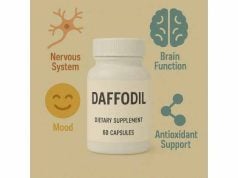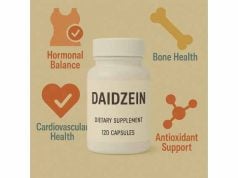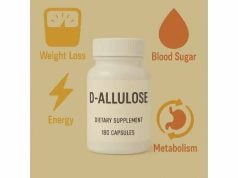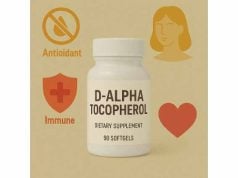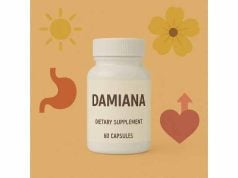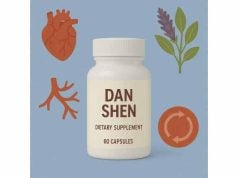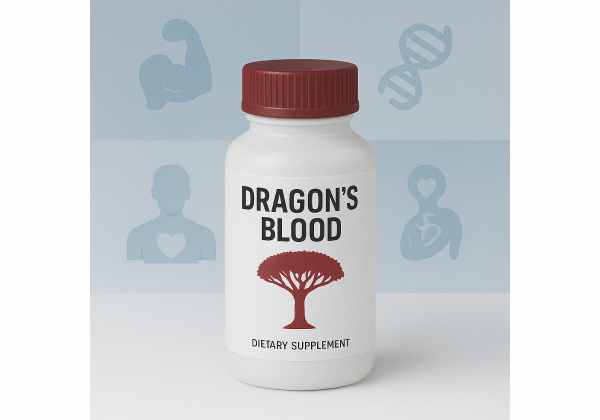
Dragon’s blood is the deep red resin obtained from several plant genera, most notably Croton lechleri in the Amazon and Dracaena and Daemonorops species in the Old World. For centuries, the sap has been used on minor wounds and for digestive upsets. Modern research has clarified pieces of the puzzle: the latex is rich in proanthocyanidins (a class of polyphenols) and contains the alkaloid taspine; a purified fraction from C. lechleri—crofelemer—targets chloride channels in the gut and is an approved antidiarrheal drug. At the same time, “dragon’s blood” is not one single product. Composition varies by species, harvest, and processing, which means benefits, dosing, and safety should be approached with care. This guide brings the evidence and practical know-how together so you can decide whether dragon’s blood deserves a place in your toolkit—and how to use it wisely.
Key Takeaways for Dragon’s Blood Users
- Topical resin can form a protective film and may speed closure of minor wounds.
- A purified derivative (crofelemer) reduces intestinal fluid secretion and helps noninfectious diarrhea.
- Prescription crofelemer dose: 125 mg twice daily; dietary supplement doses are product-specific.
- Avoid use during pregnancy or with immunosuppressant drugs unless your clinician approves.
- Choose products that identify the plant source (e.g., Croton lechleri) and follow label limits.
Table of Contents
- What is dragon’s blood and how it works
- Benefits backed by evidence
- How to use it day to day
- Dosage, forms, and timing
- Side effects, interactions, and who should avoid
- Research summary and what to expect
What is dragon’s blood and how it works
Dragon’s blood refers to the crimson resin that exudes when certain trees or palms are cut. The best-known medicinal source is Croton lechleri (also called sangre de drago or sangre de grado) from South America. Other resins sold as “dragon’s blood” may come from Dracaena (e.g., D. cinnabari on Socotra), Daemonorops (rattan palms from Southeast Asia), or Pterocarpus (West Indies). While all yield a striking red resin, their chemistry is not identical. That matters for buyers: the label should name the species, because most modern human evidence relates either to C. lechleri latex or to crofelemer, a defined fraction derived from it.
Chemically, C. lechleri latex is dominated by polyphenols, particularly oligomeric proanthocyanidins (often constituting the majority of its dry weight), along with smaller amounts of taspine (an alkaloid), flavan-3-ols (catechin, epicatechin), and various diterpenes. These constituents explain two practical properties that users notice:
- Film-forming astringency on skin and mucosa. When the resin is spread on clean skin or a small mucosal area, it dries within minutes into a flexible, dark coating. That film acts like a “liquid bandage,” which can help hemostasis (slowing minor bleeding), reduce weeping, and create a temporary barrier. Astringent polyphenols lightly tighten tissue; taspine and related compounds have been linked with early wound-healing events, such as fibroblast migration and collagen matrix remodeling.
- Gut fluid regulation (by a purified fraction). The crofelemer fraction of C. lechleri latex directly inhibits intestinal chloride channels—CFTR and CaCC—on the luminal side of enterocytes. By reducing chloride (and thus water) secretion into the intestine, it helps control secretory diarrhea. This is not folklore: crofelemer is an FDA-approved, prescription antidiarrheal for noninfectious diarrhea in adults with HIV on antiretroviral therapy. Importantly, crofelemer is standardized and purified; it is not the same as taking crude resin drops.
These mechanisms frame realistic expectations. Topically, dragon’s blood can support the body’s own closure of minor wounds and abrasions, and orally, whole resins may offer gentle, adjunctive gut comfort. But the strongest, most reproducible gut effects in humans come from crofelemer—not from variable household tinctures.
Species and processing also affect color, taste, and potency. For instance, ethanol-based extracts of C. lechleri capture more phenolics than water alone, and extraction conditions influence antioxidant profiles. This chemical variability is one reason to buy from transparent brands and avoid automatically extrapolating results from one “dragon’s blood” to another.
Finally, “natural” is not “harmless.” Astringent polyphenols can bind other compounds; latex resins can irritate sensitive skin; and oral use should be short-term and goal-driven. The next sections translate these principles into practical, step-by-step guidance.
Benefits backed by evidence
Topical wound care (minor, superficial lesions). A randomized, double-blind, placebo-controlled trial in sixty adults undergoing skin-tag removal found that a dragon’s blood cream (prepared from C. lechleri) accelerated wound healing versus placebo. Participants applied the cream twice daily, and the treatment group showed earlier visible improvement and shorter time to closure. The results align with traditional use and plausible mechanisms: the resin forms a protective film, its polyphenols create an astringent environment that limits weeping and microbial access, and taspine has been associated with early tissue repair processes in preclinical models. For household use, this translates to support for small cuts, abrasions, and similar superficial injuries—after cleaning and with sound wound-care hygiene.
Gastrointestinal support (context matters). The clearest modern signal comes from crofelemer, which reduces chloride and water secretion into the intestinal lumen by inhibiting CFTR and CaCC channels. That mechanism provides symptomatic relief in noninfectious diarrhea, validated in adults with HIV on antiretroviral therapy. Although crofelemer is a drug, its success underscores that C. lechleri latex harbors constituents capable of reliable antidiarrheal action. Oral dietary supplements of crude resin are less standardized; some users report milder improvements in stool consistency or urgency during short-term use, but robust human trials on over-the-counter products are sparse. If diarrhea is infectious, bloody, or persistent, medical evaluation is essential—resin drops are not a substitute for diagnosis and care.
Oral and dental comfort (adjunctive). Traditionally, diluted resin has been used as a gargle or applied sparingly to bleeding gums. Users often describe less oozing and a protective feel. While controlled human studies are limited in dentistry, the same film-forming and astringent properties plausibly explain a sense of comfort. In practice, these are adjunct measures to professional dental care, not standalone treatments for periodontal disease or infections.
Inflammation and antimicrobial effects (preclinical). In vitro and animal studies report antiviral, antibacterial, antioxidant, and anti-inflammatory actions for C. lechleri extracts and fractions. For example, oligomeric proanthocyanidins can scavenge reactive species and modulate inflammatory mediators, and the resin has shown activity against select microbes in lab systems. These findings are hypothesis-generating: they help explain traditional uses and justify topical applications but should not be read as proof of systemic disease modification in humans.
What claims exceed the data? Broad promises—“immune boosting,” chronic disease reversal, or anticancer effects—are not supported by high-quality human trials of dietary supplements. The oncology literature around crofelemer focuses on diarrhea management during certain regimens; it does not imply antitumor activity.
In short: most solid for dragon’s blood are topical help for minor wounds (human trial) and gut fluid control by its purified drug derivative. Everything else ranges from plausible to preliminary—and should be framed as such when deciding whether to use the resin.
How to use it day to day
Step 1: Clarify your goal and red flags. Dragon’s blood can be a reasonable short-term adjunct for (a) minor superficial wounds or skin nicks and (b) non-alarming loose stools where infection and other red flags are unlikely. If you have fever, blood in stool, black tarry stools, severe abdominal pain, or signs of dehydration, do not self-treat—seek care. For persistent diarrhea (more than 48 hours), recent antibiotic use, travel exposures, or significant medical conditions, get evaluated.
Step 2: Choose the right form.
- Topical resin or cream (preferred for small wounds). Look for products that clearly name the species (e.g., Croton lechleri). For a household kit, a small bottle of resin or a standardized cream is practical.
- Oral tincture or capsules (adjunctive GI support). Labels vary; there is no universal adult oral dose for crude resins. If your main need is noninfectious diarrhea in the setting of HIV, talk with your clinician about prescription crofelemer rather than self-experimenting with supplements.
- Gargle or oral rinse (comfort only). A few drops diluted in water for short swishes can be soothing, but this is not a treatment for dental disease; clear it with your dentist.
Step 3: Apply or take it correctly.
- Topical film on clean skin. Rinse the area, pat dry, then apply a thin layer (just enough to gloss the surface). The resin dries quickly; reapply once or twice daily as the film wears off. Do not seal over deep punctures, large wounds, or obviously infected skin.
- Oral use for the gut. If you and your clinician agree to a short trial of a C. lechleri supplement, start with the lowest label dose after food for two days to gauge tolerance. Separate by two hours from new prescription medicines and mineral supplements, because tannins can bind or reduce absorption. Hydrate well. Reassess within a week; if there is no clear benefit, stop rather than escalating dose.
- Mouth and throat. Add a few drops to a glass of water, swish or gargle, and spit out. For gums, some users place a tiny amount on a toothbrush; do this only with dental guidance.
Step 4: Set a time limit. For topical use, continue only as long as needed for minor closure and comfort. For gut support, limit a self-directed trial to several days, then reassess. Many experienced users follow a short-cycle pattern (for example, a few weeks on and one week off) for general support, but chronic, indefinite use is not recommended without professional oversight.
Step 5: Monitor for side effects and interactions. Watch for skin irritation, itching, or stinging with topical use as the film forms; orally, some people notice a bitter taste, nausea, or temporary changes in stool. If anything feels unusual or worsens, stop and re-evaluate with a clinician.
Quality tips. Prefer brands that specify species and part used (latex/resin), disclose extraction solvent, and provide lot numbers. Resin composition varies by geography and processing, so transparency and consistency matter.
Used this way—goal-first, short-term, cautious with meds—dragon’s blood can be a considered addition to a home first-aid kit and a carefully chosen adjunct for mild digestive episodes.
Dosage, forms, and timing
Important: There is no standardized adult oral dose for crude dragon’s blood supplements. Labels differ across manufacturers and species, and resins are not interchangeable. The safest approach is to follow the specific product’s instructions and to keep trials short unless your clinician advises otherwise.
That said, here is a practical framework to navigate dosing decisions:
Topical use (minor, superficial wounds).
- Amount: Use just enough resin or cream to create a thin, even film.
- Frequency: Once or twice daily, depending on how fast the film wears off.
- Duration: Until the superficial defect closes or your clinician advises otherwise.
In a randomized clinical trial on small skin wounds after skin-tag removal, a C. lechleri cream was applied twice daily and led to faster closure compared with placebo. This supports common household practice but does not imply efficacy for deep or infected wounds.
Oral use (dietary supplements).
- Starting strategy: Begin at the lowest label dose after food to reduce queasiness; increase only if needed and tolerated.
- Spacing: Keep a two-hour gap from new prescriptions, iron, calcium, or magnesium supplements to minimize binding interactions from tannins.
- Hydration: Add one or two extra glasses of water per day during use.
- Stop rules: If there is no clear benefit after several days, stop. Seek care sooner if red flags are present (blood in stool, fever, severe pain, dehydration).
Prescription option for specific cases (not a supplement).
- Crofelemer is a purified fraction from C. lechleri latex with a defined mechanism (CFTR and CaCC inhibition).
- Approved adult dose: 125 mg twice daily for noninfectious diarrhea in adults with HIV on antiretroviral therapy.
This reference dose is included to clarify the difference between a standardized drug with proven efficacy in a defined condition and the variable dosing found in over-the-counter resins. It is not a suggested dose for dietary products.
Mouth and throat comfort.
- Gargle/rinse: Add a few drops to a glass of water; swish briefly and spit out.
- Gums: Apply an extremely small amount with a toothbrush only if your dentist agrees.
Who should avoid dosing experimentation.
- Individuals on immunosuppressive therapy, post-transplant care, or biologic agents for autoimmune disease.
- Pregnant or breastfeeding individuals.
- Children, unless a pediatric clinician recommends and supervises use.
- People with bleeding disorders or those on anticoagulants should consult a clinician before topical use on mucosa or wounds.
Timing tips. Take oral products after meals to soften the bitter taste and reduce nausea. If you tend toward constipation, favor shorter oral trials and emphasize hydration; intense astringency can change stool form.
Because resins are complex, the wisest dosing is conservative, time-limited, and label-specific, with an emphasis on monitoring and medical backup when symptoms do not resolve quickly.
Side effects, interactions, and who should avoid
Overall tolerability. In small human studies and traditional use, dragon’s blood appears well tolerated. Typical reactions are mild and self-limited: a brief sting or itch as the topical film dries; bitter taste, mild nausea, or transient changes in stool with oral use. A modern hepatology monograph notes no clear link between dragon’s blood or crofelemer and clinically apparent liver injury; trial-era liver enzyme elevations with crofelemer were rare, mild, and transient. While reassuring, this does not replace individualized medical judgment for people with pre-existing liver disease.
Skin and mucosa cautions.
- Avoid applying resin over deep punctures, large lacerations, or infected areas. The film can seal in debris or bacteria.
- People with latex or plant resin allergies should avoid topical use or perform a small patch test first. Discontinue if a rash, swelling, or persistent irritation occurs.
Oral cautions.
- Do not self-treat infectious diarrhea, bloody stools, black tarry stools, high fever, or severe abdominal pain. These require urgent evaluation.
- Dehydration risk increases with ongoing loose stools; pair any short trial with fluids and electrolytes.
Drug interactions and spacing.
- Tannins and polyphenols can bind medications and minerals in the gut. Separate oral dragon’s blood products by at least two hours from new prescription drugs, iron, calcium, or magnesium supplements unless your clinician advises otherwise.
- Immunosuppressants: Avoid supplements marketed for “immune support” (including dragon’s blood products) if you are on immunosuppressive therapy (post-transplant regimens or biologics for autoimmune disease), unless your specialist approves.
- Anticoagulants/antiplatelets: While direct interactions are not well documented, use caution with topical application to mucosal surfaces and consult your clinician.
Special populations.
- Pregnancy and breastfeeding: Insufficient safety data; avoid.
- Children: Avoid unless a pediatric professional specifically recommends and supervises use.
- Older adults or complex conditions: Check with a clinician, particularly when multiple medications raise the risk of interactions or when diarrhea could signal something serious (e.g., medication side effects, infection, inflammatory bowel disease).
Quality and sourcing. Because “dragon’s blood” spans several species, products can vary widely. Prefer those that:
- Name the botanical species (e.g., Croton lechleri).
- Disclose extraction method (e.g., ethanol extract of latex).
- Provide batch or lot numbers and third-party testing where available.
When to stop and seek help. Stop immediately and seek care for allergic reactions (hives, swelling, wheeze), worsening gastrointestinal symptoms, or any new, unexplained systemic symptoms. For wounds, stop and seek care if redness, swelling, warmth, or pus develops.
The bottom line: dragon’s blood is not a cure-all, but with careful selection and conservative, short-term use, most healthy adults tolerate it well. Respect its limits and the signs that call for professional evaluation.
Research summary and what to expect
What the clinical evidence supports right now.
- Topical healing for small, clean wounds: A randomized, double-blind, placebo-controlled trial using a C. lechleri cream twice daily after minor dermatologic procedures reported faster closure versus placebo. This is the clearest human signal for the resin itself in topical care.
- Gut fluid control by a defined derivative: Crofelemer, the purified oligomeric proanthocyanidin fraction from C. lechleri, inhibits CFTR and CaCC chloride channels in the intestine and is approved to relieve noninfectious diarrhea in adults with HIV. Its local, non-absorbed action explains good tolerability and symptom relief in this narrow indication.
What is promising but preliminary.
- Oncology settings (diarrhea management): In a randomized phase II prevention study in HER2-positive breast cancer, crofelemer reduced the burden of chemotherapy-related diarrhea in some cycles and showed favorable tolerability; findings support further research but do not justify over-the-counter resin use as a substitute for guideline-directed care.
- Broad antimicrobial and anti-inflammatory roles: A large preclinical literature documents antioxidant capacity, modulation of inflammatory pathways, and activity against select microbes. These mechanisms help rationalize topical and adjunctive uses but do not prove systemic disease modification from dietary supplements.
How to translate the data into practical expectations.
- Topical: Expect a quick-drying film within minutes and subjective protection. Visible changes—less weeping, earlier “drying”—may appear in the first few days on small lesions, consistent with trial observations. Always pair with cleaning, proper dressings where needed, and watch for infection.
- Oral supplements: If you try a short, label-guided course for non-alarming loose stools, any benefit should be noticeable within 1–3 days. If nothing changes or symptoms worsen, stop. This is not a therapy for serious or persistent diarrhea.
- Crofelemer (prescription): Appropriate when a clinician identifies noninfectious diarrhea in the context of HIV and antiretroviral therapy. It is targeted, local, and typically 125 mg twice daily. For other causes of chronic diarrhea, your clinician will weigh the evidence and alternatives.
Common pitfalls to avoid.
- Equating all “dragon’s blood” products. Croton lechleri latex is not the same as Dracaena resin; even within C. lechleri, extraction and standardization vary.
- Ignoring labels and interactions. Tannins can bind medications and minerals; spacing doses matters.
- Self-treating red-flag symptoms. Blood in stool, fever, severe pain, weight loss, or dehydration needs proper assessment, not herbal self-care.
Outlook. Future studies will likely refine standardization of over-the-counter extracts, compare species and extraction methods, and clarify topical versus oral niches. For now, dragon’s blood earns a spot as a supportive topical and, with careful selection, a short-term adjunct for minor digestive complaints—anchored by rigorous evidence from its purified derivative and a credible topical trial.
References
- Dragon’s Blood – LiverTox – NCBI Bookshelf 2024 (Monograph)
- Efficacy of Dragon’s blood cream on wound healing: A randomized, double-blind, placebo-controlled clinical trial 2015 (RCT)
- Crofelemer, an Antisecretory Antidiarrheal Proanthocyanidin Oligomer Extracted from Croton lechleri, Targets Two Distinct Intestinal Chloride Channels 2010 (Mechanistic Study)
- HALT-D: a randomized open-label phase II study of crofelemer for the prevention of chemotherapy-induced diarrhea in patients with HER2-positive breast cancer receiving trastuzumab, pertuzumab, and a taxane 2022 (RCT, Phase II)
- Novel Insights into the Biological Activity of Croton lechleri Twigs Extracts and Advancements in Their Sustainable Recovery 2024 (Review)
Disclaimer
This article is for general information only and is not a substitute for medical advice, diagnosis, or treatment. Dragon’s blood products vary in composition, and responses differ by individual and condition. Do not use dragon’s blood to delay evaluation of red-flag symptoms (e.g., bloody or black stools, high fever, severe abdominal pain, signs of infection, dehydration). If you are pregnant, breastfeeding, immunosuppressed, have chronic illness, or take prescription medications, speak with a qualified clinician before use.
If this guide helped you, please consider sharing it on Facebook, X (formerly Twitter), or your favorite platform, and follow us for more evidence-based wellness explainers. Your support helps us continue producing careful, high-quality content.

